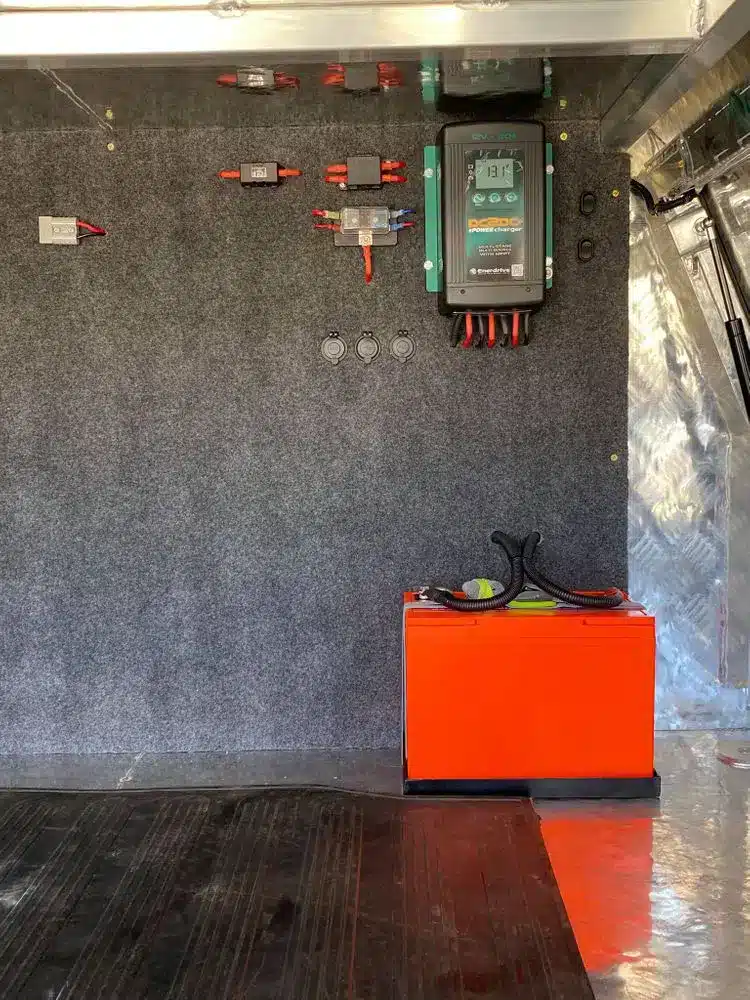
BRAND NAMES
DUAL BATTERY SYSTEM & DC/DC
What is an Alternator – The alternator is the power supply used by the vehicle to recover its start battery from the engine starting process and provides power to its electrical consumers running. There are two common types of alternators, the traditional fixed-voltage alternator and now the most common smart alternator, which can fit most vehicles built after 2011. The fixed-voltage alternator produces sufficient voltage to charge a secondary battery successfully. The smart alternator technology adjusts its output voltage based on the vehicle operating conditions and electrical load. Such is when the vehicle’s engine computer sends a signal to the smart alternator telling it only to produce enough charge to cover the calculated load. Which is to reduce the electrical load; and the mechanical load on the engine, contributing to better fuel economy. It will render it unsuccessful at charging a secondary battery to an unusable level when the secondary battery will pair with the start battery in the traditional way. Widespread implementation of smart alternators means that the one trusty process of parallel charging from the start battery to the secondary battery is ineffective in vehicles equipped with this technology. Because, for all the things a computer in a smart alternator vehicle knows, it does not consider the secondary battery’s state of charge, type, or location in the car in its calculations.
DC to DC Battery Charges – A DC/DC charger protects the start battery as an isolator does, but charging it boosts the charge to the auxiliary battery. The DC/DC charger is wired into the vehicle’s ignition system, and the power that the DC/DC charger required to run is calculated into the engine computer’s electrical calculations. The DC/DC charger is operational and charging the secondary battery as soon as the vehicle’s ignition is switched on, or a solar input option to provide power to the DC/DC charger while the car is switched off. It is ideal to locate the DC/DC charger as close to the secondary battery as possible, providing an optimum chance of charging. It is also ideal to locate the secondary battery and DC/DC charger close to the accessories you wish to run off the secondary battery giving you installation costs of cabling the items from the engine bay.
Smart Battery Isolators – The battery isolator (SBI) is the most simple, time-tested, and straightforward approach using your vehicle’s alternator to charge the second battery only while the car is running. Its job is also to protect the start battery from going flat by isolating it when the engine is running. The charge is going to the starting battery via the vehicle’s alternator. It will do this by sensing the battery voltage, and when they start battery reaches 13.2 volts (on a 12-volt system), it will connect and start charging the secondary battery. An SBI is best suited for vehicles that have a fixed voltage alternator and not smart alternator technology. Vehicles with smart alternator technology cannot detect the secondary battery, which does not know how to charge for the secondary battery. Although it is still possible to fit an SBI to a vehicle with smart alternator technology, the secondary battery will not receive a full charge and therefore shorten the life of the secondary battery as well as run the risk of not having enough charge in the secondary battery to run items, like a fridge, for the length of time that the vehicle’s engine is switched off.
There are many different types of dual battery charges available, several factors that will dictate which one is best for your vehicle. This includes the type of battery you have, the kind of alternator your vehicle has, the location of the install and the power you require. Features do also vary, such as the ability to accept additional power sources such as solar. The best solution for your vehicle ultimately depends on various factors and variables relating to your needs.




